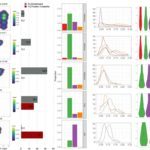About
Entamoeba histolytica is a protozoan parasite and an amitochondriate pathogenic amoeba, which may cause dysentery and liver abscess in humans (i.e. amoebiasis). Differential pathogenicity is observed among E. histolytica strains: strain HM1:IMSS is virulent while strain Rahman is naturally attenuated. A closely related species, Entamoeba dispar, is non-pathogenic and produces asymptomatic infections. Another species, Entamoeba moshkovskii, lives mostly freely and rarely infects humans. Despite the fact that these Entamoeba species are morphologically indistinguishable and phylogenetically closely related, their clinical results are radically different. Their phenotypic differences provide an excellent theoretical basis for comparative analyzes at the genome level to search for factors relevant to pathogenicity and adaptation to humans.
Our aim is to understand the phenotypic differences between Entamoeba species/strains using comparative phylogenomic and transcriptomic approaches, which is supported by two primary objectives; 1) To catalogue the relevant and high-resolution transcriptomic and phylogenomic differences between Entamoeba species/strains and 2) To functionally annotate the Entamoeba protein families and discover the relevant gene sets relevant for the phenotypic differences between Entamoeba species/strains.
Taking advantage of the next-generation sequencing technologies, we characterize the transcriptional landscape of the Entamoeba species/strains at an unprecedented scale and resolution, including the generation of genome wide maps for coding and non-coding transcripts, small RNAs and anti-sense RNAs, as well as the expression profiles of these transcripts in three culture conditions (axenic culture, nitric oxide treatment and ex vivo colon culture). By discovering the diversity and expression profiles of small RNAs and anti-sense RNAs we expect to provide valuable insights into potential roles of non-coding RNA across the Entamoeba transcriptomes.
Genamibe represents the first and the most comprehensive study on Entamoebidae in terms of : 1) the types of transcripts we are able to capture; 2) the quality of the coding transcript map ( i.e. map of transcription start site, splicing junctions, alternative splicing pattern and poly-adenylation sites); 3) the scope of comparisons (i.e. inter-species, inter-strain and inter-culture-condition comparisons).
This study has a significant impact on the fundamental understanding of transcription in lower eukaryotes and set an example for high-quality standard for studies in similar kinds of protists.








